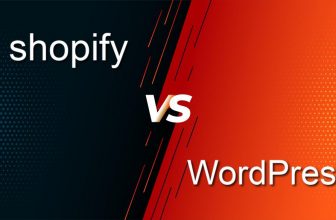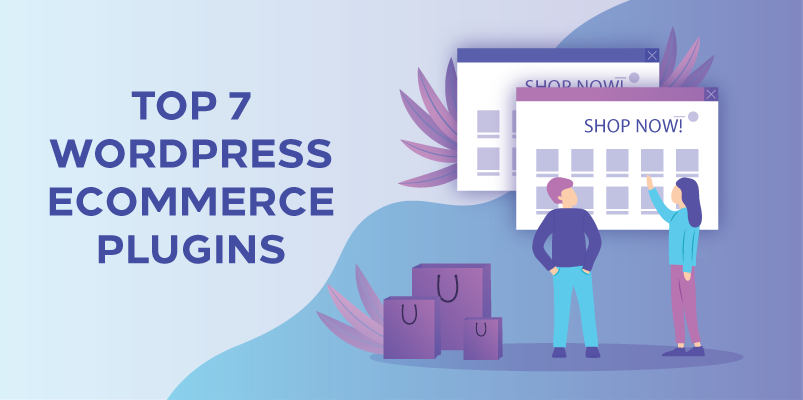You’re passionate about your business, put your heart and soul into it, and provide the best quality products in your store, but still can’t see the growth you anticipated when you started? The reason could be a lack of search engine optimization (SEO) tactics for an ecommerce store.
SEO, or search engine optimization, is a set of techniques for increasing a website’s visibility in organic searches made on search engines. Optimizing your website to rank higher on the search engine result pages (SERPs) is the goal. Remember that the higher your website appears on a search result page, the more people will visit your store.
If you have an online store powered by WooCommerce, half the battle is already won. We say this because this WordPress plugin is really SEO-friendly and makes the process much easier for its use, and we’re about to tell you how!
Continue reading this article for some great SEO tips to use for you to grow Woocommerce store by channeling the right traffic from the search engine to your website.
What is Woocommerce?
WooCommerce is a free, adaptable, and open-source software plugin for creating online stores that run on the WordPress content management system. Installing this plugin lets you transform any website into a professional online shop.
WooCommerce also facilitates simple shop administration—everything from organizing product displays to handling orders to receiving payments via a variety of methods.
Around 3.8 million online stores are now powered by WooCommerce, making it one of the most popular e-commerce facilitators in the world. It runs the show for over 13% of all online stores and has a market share of over 27%. The fact that complete newcomers may use WooCommerce for e-commerce with little coding knowledge contributes to its immense appeal.
How Woocommerce Benefits Your Business
There are several platforms to choose from when you’re just starting as an ecommerce merchant. But as we mentioned above, a large number of people have entrusted WooCommerce with their stores, and that is because it offers several benefits to an eCommerce store owner. These benefits include:
- Sell any type of product, be it digital or physical.
- Several features that support an easy and seamless transaction with your customers
- Free and paid themes that are also mobile-friendly are a plus for SEO.
- Solid security of your and your customers’ data against third-party platforms.
- Provides incredible customizability to the online store.
- It avails many extensions for free and with a fee to use an increasing number of features and integrations for the store.
- It has a huge community worldwide that helps troubleshoot tech issues.
Create Your Woocommerce Store
Now that you know the fantastic benefits that WooCommerce offers, you first need to create a WooCommerce store to take advantage of its SEO optimization qualities. Let’s see how you can do that step-by-step:
- Install WordPress on your web server.
- Log in and navigate to the left sidebar in the admin area and choose Plugins.
- Click Add New icon and type WooCommerce in the search bar.
- Install the WooCommerce plugin and then click on the Activate button.
You’ll get a notification when the installation is done, and the Setup Wizard will start. In case you missed it, the Setup Wizard is available on the help page. Next, set up your virtual store in the following easy steps:
- Add details of your store, such as location and contact details.
- Tell them about the industry you operate in.
- Answer questions about the type of products you will sell: downloads vs. physical items.
- Add other details like the number of products to show on the details.
- The platform may suggest certain features and themes help you set up your online shop.
Now your store is ready! And your product page would be visible for purchase, for preview check, next level 3600
Dig Into Woocommerce SEO
WooCommerce is designed for websites powered by WordPress, which is known for its friendliness with SEO. Everything you need to do to improve a WooCommerce ecommerce store is similar to the things you’d be doing to optimize a WordPress site in general. There are additional amazing SEO benefits of WooCommerce for your business, which include:
- Easy Organization: You may quickly find what customers could be looking for by using the predefined product tags, categories, and characteristics.
- Great Content tools: Products may be categorized, tagged, and managed with little effort.
- Leverage analytics: WooCommerce’s in-depth analytics and seamless integration with Google Analytics allow you to combine information about your store’s visitors from several sources.
When you’re working on WooCommerce SEO, you’ll have to carry out research for target keywords. This will reveal what people type into a search engine to get information relevant to your business.
You can use keyword research tools, such as Keyword Overview or Semrush’s Keyword Magic. The average number of times a term is searched for, as well as some suggestions, will be shown via these tools.
We suggest zeroing in on long-tail keywords with a reasonable amount of monthly searches. You shouldn’t waste your time with keywords that don’t get much traffic. If nobody searches for a certain term, that search result won’t get a lot of clicks.
Remembering search intent when you narrow down your list of core target phrases is essential while doing keyword research.
Top SEO Tips
There isn’t just one way to increase the organic traffic to your WooCommerce shop; rather, there are several. Getting your WooCommerce shop to the top of the search engine results pages won’t happen overnight. Nonetheless, believe us when we say that the effort is going to be worth it because the advantages of SEO traffic will continue to accrue for a long time in the future.
To help you get started, we’ve listed down some tips which we consider some of the most important steps to take for SEO.
Optimize Your SEO
When it comes to optimizing content for SEO, it includes everything, from product titles and descriptions to its structure and images. Here are our top 5 tips to enhance your SEO for search engines.
- Use page titles that support SEO
Customers and search engines both benefit from descriptive page names. Pages such as “Categories” and “Products” are common in most online shops.
The category pages of an online store facilitate the discovery of certain product kinds. Of course, each item within a category will have its own product page.
You may target broad keywords on category sites and narrow terms on product pages. If you’re selling baby products, baby blankets would be a category, while the product pages for specific items like the “Elephant Pattern Baby Blanket” would be its subclass.
- Write unique descriptions for each product
We recommend breaking up lengthy product descriptions into more manageable chunks. They should include all the pertinent details about the things you sell, written in a way that will appeal to your target market. If, for instance, you want to offer handmade baby blankets to new moms, you need to use language that appeals to them.
Product descriptions are indexed in the same way as any other text on your website. Product keywords to use for SEO purposes should be used in these descriptions.
- Use optimized images
The product images must be of the highest quality. Yet it’s not enough to just have good photos.
Your images might be working against you if they are not optimized appropriately. Even high-quality photographs that are too big might slow down your website’s load time. Your site’s rankings will suffer if users have to wait too long while searching for information. Focus on the following two things for image optimization:
- Use a minimized size of the image without sacrificing image quality.
- Ensure that your photos are keyword-optimized. To keep the image’s integrity intact, you should modify its name, file, title, and alt-text to incorporate the relevant keywords.
- Use a proper URL structure
When used inappropriately, large URLs full of complicated characters might give off an unprofessional impression.
Updating your permalinks to represent the most basic structure is one step in this direction. Nevertheless, this also implies that all of your product categories, website pages, and blog articles must be optimized for the specified keyword.
Whenever feasible, try to keep your URLs as straightforward and understandable as possible.
- Don’t use duplicate content.
Your WooCommerce site’s rankings may suffer if you use too much duplicate material. Too many WooCommerce stores often fall victim to this pitfall, though. As such, they often utilize the manufacturer’s own language to describe the things they offer. However, results pages for the same information can cause fierce competition. Also, this information isn’t always written with your target market in mind.
In addition, when you have hundreds of items that are all essentially the same, it might be challenging to come up with innovative and intriguing product descriptions for each. Yet, it is crucial; otherwise, it will result in duplicate content. Also, make sure to use original images for each listing too.
However, optimizing your WooCommerce store for search engines can be a complex and time-consuming process, especially if you lack experience in SEO. In such cases, it might be a good idea to consider hiring the right SEO company to help you achieve your goals and drive more traffic to your online store.
Don't Forget Plugins
An excellent on-page optimization plugin is a must if you’re serious about increasing your site’s search engine rankings.
There are many plugins to choose from, but we love the Yoast plugin for WooCommerce SEO. This is a paid plugin that goes beyond the already amazing Yoast SEO plugin for WordPress and offers additional functionality tailored to WooCommerce.
Using this plugin, you can accomplish a variety of tasks, such as:
- Optimizing the site structure with breadcrumbs
- Enhancing the sitemap
- Getting focus keywords for each page
- Creating Pinterest-worthy images
- And much more
Some other plugins that you can consider are All in One SEO Pack, WP Smushit, Broken Link Checker, Jetpack, and All In One Schema Rich Snippets.
Pick a Theme That Suits Your Needs
WooCommerce themes designed for SEO increase a site’s visibility in organic search results. The best WordPress themes are created to improve your site’s search engine optimization and user experience.
Users of WordPress have a huge selection of pre-made themes, with multitudes more available from external developers. Most of these themes will greatly improve the visual appeal of your WooCommerce store, but you should not overlook the negative effects of bad code, sluggish loading times, and an absence of plugin compatibility on your site’s search engine rankings.
A store’s theme may make or break its success, so here are some things to keep in mind:
- Get great visual appeal that is appropriate for your store’s target audience.
- Choose themes with regular maintenance to promise compatibility with WordPress and woocommerce’s regular updates and releases.
- Make sure you get the support you get to combat bugs that you may face.
- Hunt for simple themes that don’t hold your site down too much and have the option of adding more features via the use of plugins and extensions.
- Look for responsiveness in the design. This means it can be operated over all kinds of screens, be it a phone, iPad, or desktop.
Grow Your Woocommerce Store
Once your store is set up, and you’ve incorporated all the best practices for SEO, it’s time to focus on the growth of your WooCommerce store. Here you need a solid marketing plan to promote your store and bring it to the attention of your target audience. We strongly recommend incorporating the following two things in your online marketing plan:
- Incorporate email marketing.
You can do this with automated emails triggered by specific actions on your store’s website. So, for example, a visitor will receive a welcome email when they sign up for your store. They can also get personalized emails for promotions and new products, order processing, seasonal campaigns, etc. You can also automate notifications for abandoned carts and send a regular newsletter. For instance, if you own sell scented candles, you could setup an automatic email to get sent to subscribers every time you release a new candle.
- Leverage the power of social media.
Social shopping is one of the greatest forces for driving sales of an online store. As compared to other channels, social media marketing stands out for being the most natural approach to increase exposure to your business and offering a wide variety of alternatives for driving traffic to your website. You can do this by regularly posting content about your store, seeking community engagement with feedback and reviews, providing support from your account, and running specific campaigns for events and promotions.
You must thoroughly plan your marketing strategy once your store is ready and incorporate and have a plan of action on how you’ll implement the above two things.
Conclusion
Now that you know more about how to improve your WooCommerce store’s search engine rankings, you should be more equipped to expand your business’s web presence and grow your online store. When paired with a solid marketing strategy, you’re sure to reap the long-lasting advantage of attracting organic traffic and building a lucrative brand.

![How to Grow Your Online Woocommerce Store [SEO Tips and Advice]](https://wpclipboard.com/wp-content/uploads/thumbs_dir/Featured-Image-qqv6a8jhlupadffrb7gikwy5oga0p1c49d9pdu9zy4.jpg)



